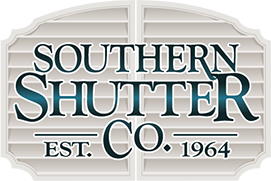Shutter Terminology
To really make the best decisions on shutter style and installation, it helps to speak the language.
Applied Moulding:
Moulding added to the front and or back of the shutter as an accent or to hide joints.
Arch Top:
A curved top on a shutter.
Batten:
The horizontal cross piece of a board and batten shutter.
Beading Detail:
A half-round edge that parallels the stile; sometimes used in conjunction with rabbeting.
Bermuda / Bahama Shutter:
A shutter providing shade and some storm protection. Bermuda shutters typically are hinged from the top and tilt out from the bottom.
Bifold:
Two shutters that are connected, often using a butt hinge.
Bleed Through:
When tannin acid leaks out of the wood onto the painted surface leaving an unsightly mark.
Brick Mould:
Moulding used around the exterior of a window frame to add an extra decorative touch. A good location to mount the plate pintel portion of a shutter hinge.
Bullet Catch:
Installed on the back of the shutter and used as a hold back.
Butt Hinge:
A hinge secured to the butting surfaces rather than to the adjacent sides of a frame. Used in bifold shutters.
Cap:
A formed strip of copper placed over the exposed top of the shutter to prevent moisture from entering joints and destroying paint.
Casement:
The frame around a window sash.
Cottage Style:
A two-paneled shutter in which the top is a bit smaller than the bottom. Usually a 40/60 split.
Cut-outs:
Special shapes or patterns cut out of a panel of a raised panel shutter (most often the top panel) or the center boards of a board and batten shutter mainly for accent purposes.
Dowel:
A rounded wooden piece fitting into adjacent pieces to secure a mortise and tenon.
Joint:
can also be called a peg.
Expansion Shield:
Used for securing a screw or bolt in a hole in masonry, concrete or stone.
Fine Grain:
High quality type of wood most often occurring in slow growth lumber. It's stronger and better resists twisting and other changes.
Fixed Louver:
A louvered shutter whose louvers are not operable.
Galvanization:
The application of zinc to steel to stave off rust and deterioration.
Hammered Bevel:
Shutter hardware whose edges have been hammered to get a rough-hewn look.
Hand-Forged:
Working metal by hand with heat and hammering tools. Primitive way to make shutter hardware.
Hook Latch & Eye:
One kind of shutter hold back.
Jamb Mount Hinge:
Hinge secured to the interior edge of a window casement.
Louver Direction:
The direction in which movable louvers pivot or fixed louvers are angled.
Louver Pitch:
The angle of the louvers on a fixed louvered shutter.
Mortise:
A notch, groove or hole in the stile to receive a tenon on the cross rail of the same size.
Mouse hole:
A notched hole on the cross rail where the tilt rod of a movable louvered shutters rests.
Offset:
The distance a working shutter will have to move between the mounting surface of a hinge and building's surface to close.
Overlap Rabbeting:
A shutter with the wood removed on the edge of one stile and the opposite edge on the opposing stile so the closed shutters completely interlock.
Ship-Lap:
Same as Overlap Rabbeting.
Pair Width:
The total width of the two shutters when together in the closed position.
Panel Configuration:
The way in which shutter center rails are situated.
Peg:
Same as Dowel.
Pintel:
The "male" part of the shutter hinge that the strap mounts on and can pivot.
Rail:
The top, bottom and center horizontal portion of a shutter that separates the panels or sections of slats.
Reveal:
The window casement or moulding portion that can still be seen once a shutter is installed.
Slide Bolt:
Shutter hardware used on the exterior to secure the shutter when it is closed.
Shutter Dog:
Piece of hardware that holds the shutter in the open position but also enables additional decorating options.
Shutter Field:
The distance between rails in any shutter that contain either louvers or a panel.
Stile:
The joinery pieces that make up the vertical side frame of a shutter.
Strap Hinge:
A shutter hinge secured to a shutter where the female end is placed over a Pintel resulting in the hinge's swivel movement.
Tannin:
A resin found in many types of wood.
Tenon:
A projection at the terminus of a rail designed to be inserted into a mortise, resulting in a joint.
Tilt-rod:
The upright strip of wood used to operate working louvers.
Window Seat:
The place where a shutter sits when closed.



